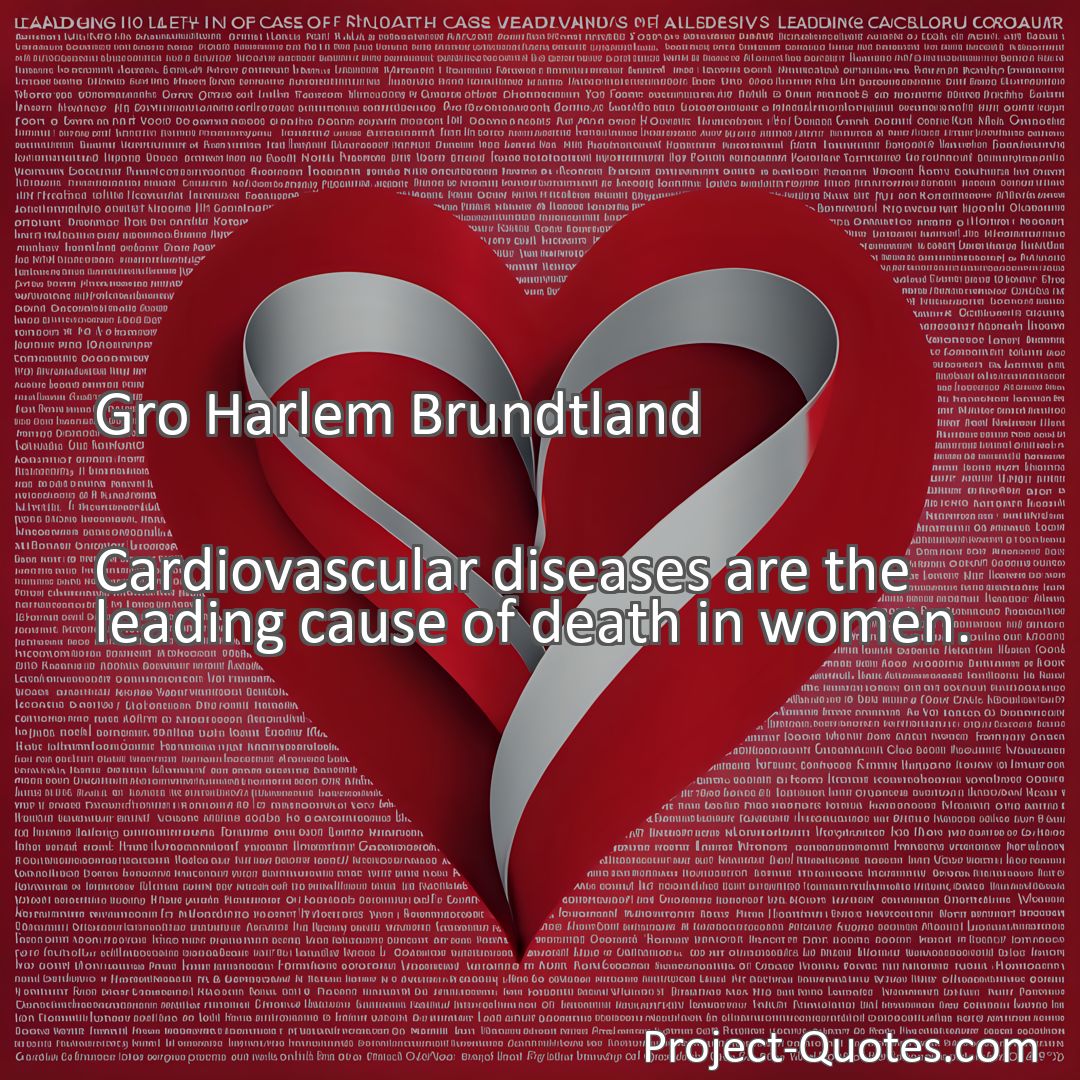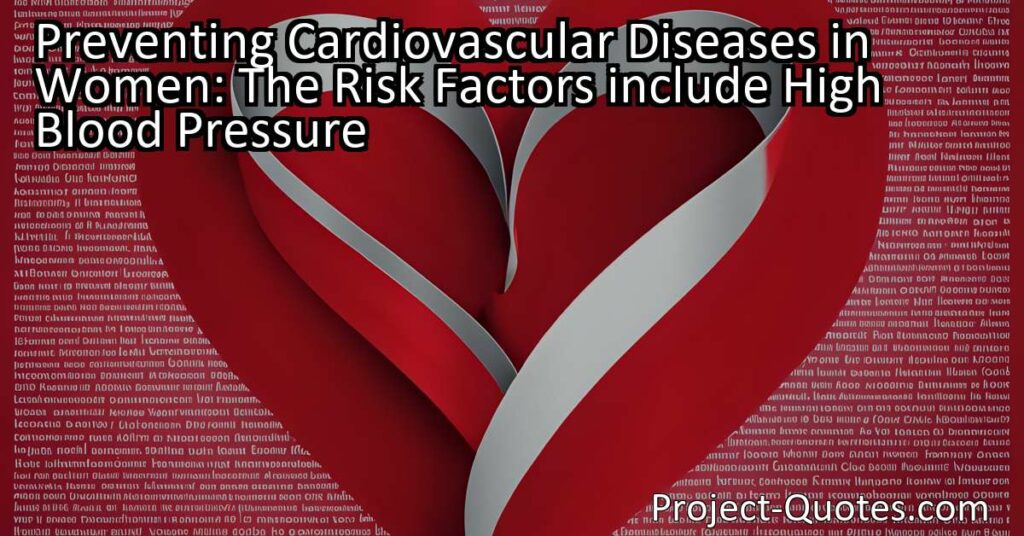Cardiovascular diseases are the leading cause of death in women.
Gro Harlem Brundtland
Preventing Cardiovascular Diseases in Women: The Risk Factors include High Blood Pressure Did you know that cardiovascular diseases are the leading cause of death in women? Understanding the risk factors, such as high blood pressure, and the unique symptoms experienced by women is crucial in preventing these diseases. By prioritizing education, promoting healthier lifestyles, and advocating for policy changes, we can empower women to take control of their cardiovascular health and live longer, healthier lives.
Table of Contents
Meaning of Quote – Cardiovascular diseases are the leading cause of death in women.
Did you know that cardiovascular diseases are the leading cause of death in women? This sobering fact was highlighted by Gro Harlem Brundtland, a renowned Norwegian politician and physician. Although it may come as a surprise to some, it is crucial to understand the gravity of this issue and take necessary steps to protect ourselves and the women in our lives.
When we talk about cardiovascular diseases, we are referring to a broad range of conditions that affect the heart and blood vessels. These include coronary artery disease, heart attacks, stroke, heart failure, and more. These diseases can manifest differently in women compared to men, and hence it is important to be aware of the unique risk factors and symptoms that women may experience.
One of the key reasons why cardiovascular diseases are the leading cause of death in women is the prevalence of risk factors. These risk factors include high blood pressure, high cholesterol, smoking, obesity, and diabetes, among others. Poor diet and lack of physical activity also contribute significantly. It is essential for women to be aware of these risk factors and take measures to minimize them. Making healthier lifestyle choices, such as adopting a balanced diet and engaging in regular exercise, can go a long way in preventing the onset of these diseases.
Another crucial aspect to consider is the impact of hormonal changes on women’s cardiovascular health. Hormonal fluctuations that occur during pregnancy, menopause, and the use of oral contraceptive pills can increase the risk of developing cardiovascular diseases. Pregnancy-related conditions such as preeclampsia and gestational diabetes can also have long-term implications on a woman’s heart health. Recognizing the significance of these hormonal influences can help in developing targeted prevention strategies.
To add to the complexity, the symptoms of cardiovascular diseases in women can be different from those experienced by men. While chest pain is often considered a classic symptom for heart attacks in men, women may experience subtler signs. Some common symptoms include fatigue, shortness of breath, nausea, dizziness, and pain in the back, neck, or jaw. Unfortunately, these symptoms are frequently attributed to other causes, leading to delayed diagnosis and treatment. As a result, it is crucial for both women and healthcare providers to be aware of these gender-specific symptoms to ensure timely intervention.
Awareness and education play a vital role in combatting cardiovascular diseases in women. It is crucial to inform women about the risk factors, symptoms, and preventive measures associated with these conditions. Regular check-ups and screenings, such as blood pressure and cholesterol tests, can help in early detection and intervention. Additionally, campaigns and initiatives that focus on raising awareness about women’s cardiovascular health should be encouraged and supported.
Moreover, breaking stereotypes and challenging societal norms is essential in addressing this issue. Women, often burdened with multiple roles and expectations, may neglect their own health in favor of caring for others. Encouraging self-care and reminding women of the importance of prioritizing their own well-being can contribute to reducing the burden of cardiovascular diseases. Empowering women with knowledge and resources can enable them to make informed decisions about their health and take proactive measures to prevent these diseases.
On a societal level, it is crucial to advocate for policies and programs that promote cardiovascular health in women. This can include initiatives to improve access to affordable healthcare, support for research on gender-specific risk factors, and educational campaigns in schools and communities. By prioritizing women’s cardiovascular health, we can make significant strides in preventing unnecessary deaths and improving overall well-being.
In conclusion, Gro Harlem Brundtland’s quote shines a light on the alarming reality that cardiovascular diseases are the leading cause of death in women. From understanding the unique risk factors and symptoms to promoting education and advocating for policy changes, there is much that can be done to address this issue. By working together, we can strive towards a future where women are empowered to take control of their cardiovascular health and live longer, healthier lives.
I hope this quote inspired image brings you hope and peace. Share it with someone who needs it today!


